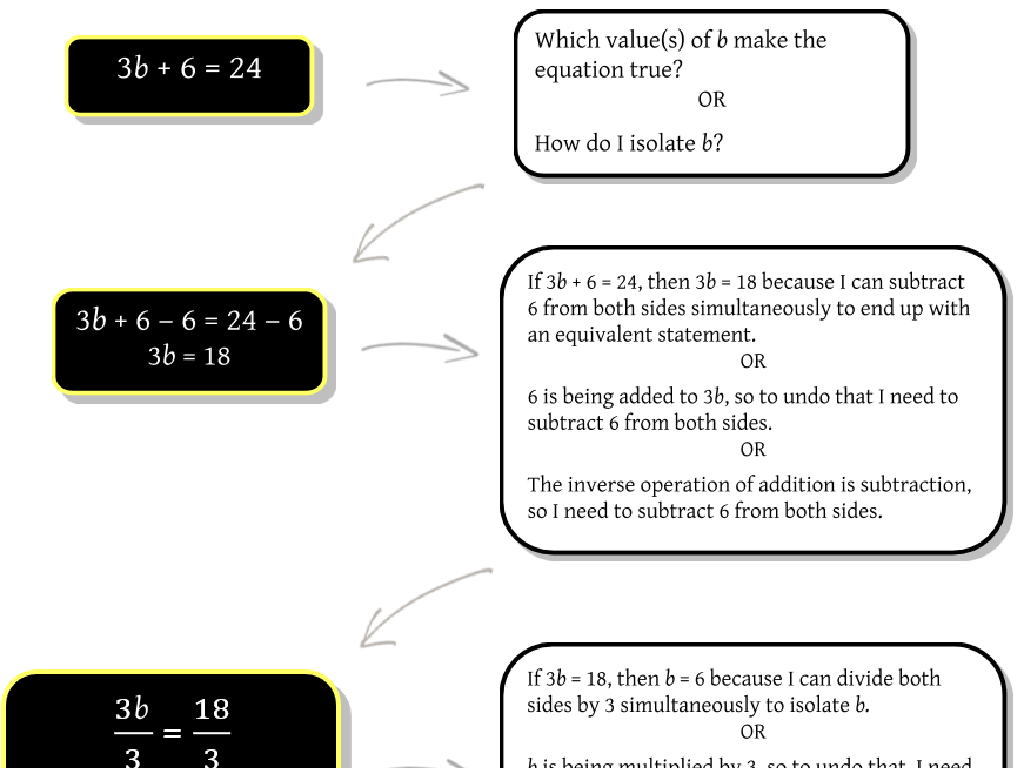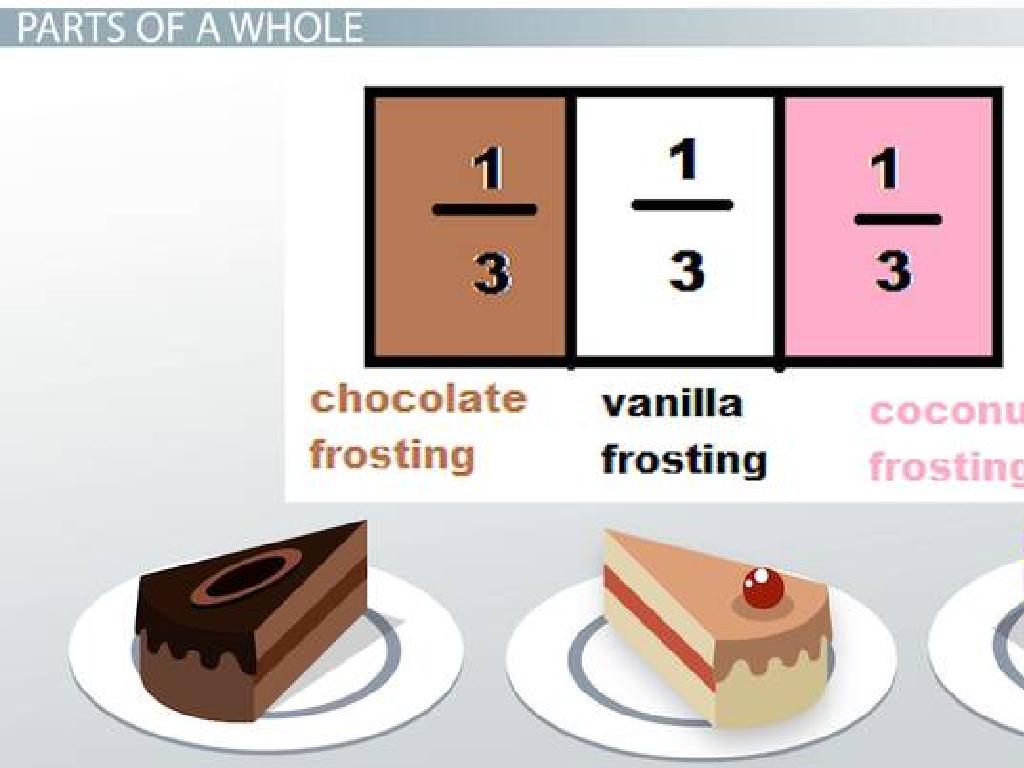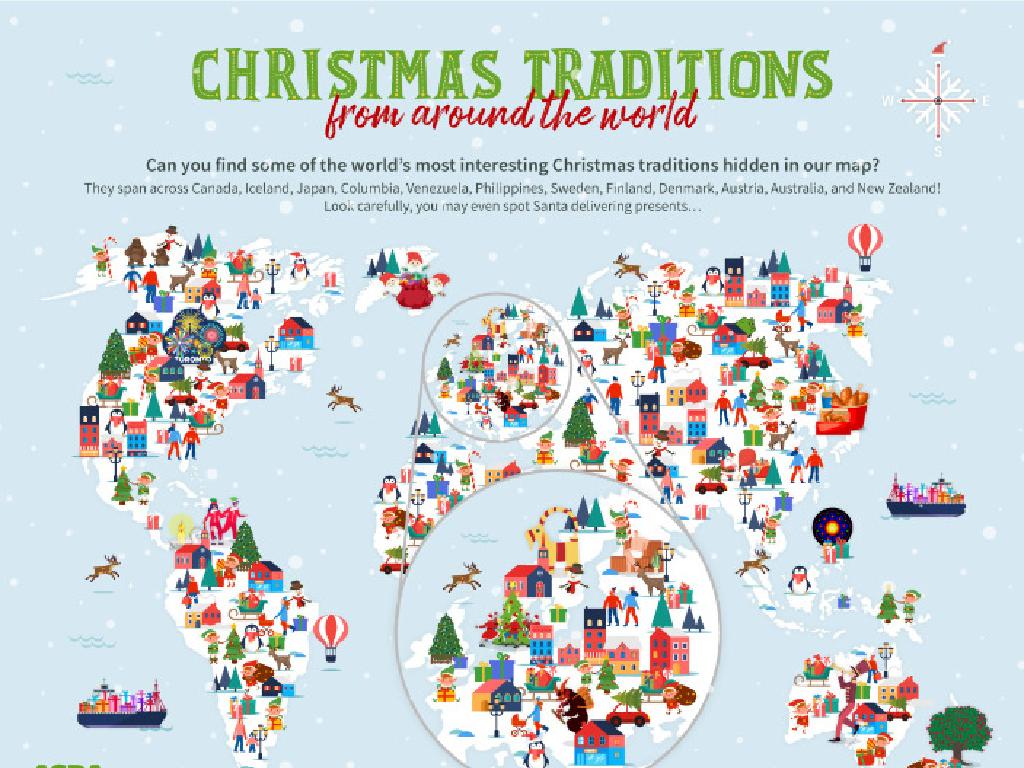Choose Metric Units Of Distance
Subject: Science
Grade: Fourth grade
Topic: Units And Measurement
Please LOG IN to download the presentation. Access is available to registered users only.
View More Content
Choosing Metric Units of Distance
– Learn about metric units
– Units like meters, centimeters, and kilometers
– Measuring distances
– Use rulers and tape measures for smaller distances
– Comparing different lengths
– How to decide which unit is best for different lengths
– Practical applications
|
This slide introduces the concept of metric units of distance to fourth-grade students. Begin by explaining the most common metric units such as meters (m), centimeters (cm), and kilometers (km), and when to use each. Demonstrate how to measure shorter distances using rulers and tape measures. Discuss with the class how to compare lengths and decide which metric unit is most appropriate for various measurements, such as using centimeters for a pencil length or kilometers for the distance between two cities. Engage the students with real-life examples where they have to choose the correct metric unit, like measuring their desk or the length of the classroom. This will help them understand the practical applications of measurement in everyday life.
Understanding the Metric System
– What is the Metric System?
– A global system for measuring distance
– Based on the number 10
– Common units: m, cm, km
– Meter is the basic unit, centimeter is 1/100 of a meter, kilometer is 1000 meters
– Why it’s important
– It’s used worldwide, making sharing and comparing easy
|
The metric system is a standardized method of measurement based on the number 10, which makes it easy to convert between units. Introduce the concept by comparing it to familiar objects (e.g., a meter is about the length of a guitar, a centimeter is roughly the width of a staple, and a kilometer is a bit over half a mile). Emphasize the importance of the metric system in science and international communication. Encourage students to think of situations where they might need to measure length or distance and how using a common system can be helpful. Plan an activity where students measure items in the classroom using metric units to reinforce the concept.
Metric Units of Distance
– Meter: Basic unit of length
– Centimeters in a meter
– 100 centimeters make up 1 meter
– Meters in a kilometer
– 1,000 meters are equal to 1 kilometer
– Choosing appropriate unit
– Use cm for small objects, m for medium, km for long distances
|
This slide introduces students to the metric units of distance, focusing on meters, centimeters, and kilometers. A meter is the fundamental unit of length in the metric system. Centimeters are smaller units, with 100 making up a single meter, suitable for measuring small objects like pencils or notebooks. Kilometers are larger units, with 1,000 meters equaling one kilometer, used for measuring distances like the length of a park or between two cities. Encourage students to think about which unit they would use for different objects or distances they encounter in daily life. For example, measuring their height in meters or the length of a classroom in centimeters.
Choosing Metric Units of Distance
– Use centimeters for small objects
– Like measuring the length of a pencil
– Use meters for larger areas
– Ideal for sizing up a classroom
– Use kilometers for long distances
– Perfect for the space between cities
|
This slide aims to help students understand the appropriate metric units of distance for different lengths. Centimeters are suitable for small items they can hold in their hands, such as pencils or erasers. Meters are more appropriate for objects or spaces they can walk around, like measuring the length or width of a classroom. Kilometers are used for distances that are too long to walk, such as the distance from their home to school or between two towns or cities. Encourage students to think of other examples of small, medium, and large distances they could measure using these units. You can also plan a class activity where students measure objects around the classroom using rulers or measuring tapes to reinforce the concept.
Let’s Practice Measuring!
– Measure classroom objects
– Choose correct metric units
– millimeters, centimeters, meters
– Record your measurements
– Use a ruler or meter stick
– Share findings with the class
|
This slide is designed for a hands-on class activity where students will apply their knowledge of metric units by measuring various objects around the classroom. Encourage them to think about which metric unit is most appropriate for each object (e.g., millimeters for small items like a pencil, centimeters for a notebook, and meters for larger items like the classroom door). They should use rulers or meter sticks for their measurements. After recording their findings, students will have the opportunity to share and discuss their measurements with the class, reinforcing their understanding of metric units and their practical application in everyday life. Prepare a list of objects to measure and ensure there are enough measuring tools for all students.
Real-Life Applications of Metric Distance
– Everyday use of distance
– Planning trips measures how far places are.
– Reading maps with kilometers
– Maps use km to show distance between points.
– Comparing distances
– How far is school from home? Use meters or kilometers.
– Choosing the right metric units
|
This slide aims to show students how the concept of distance is relevant in their daily lives. Start by discussing how we use distance measurements when planning road trips, which can help them understand the practicality of learning about kilometers and meters. Show them how to read a map scale in kilometers, which is a vital skill for geography. Encourage them to think about distances they are familiar with, like the distance from their home to school, and decide whether to measure in meters or kilometers based on the length of the trip. This will help them grasp when to use different metric units of distance. The goal is to make them comfortable with estimating and comparing distances in metric units.
Class Activity: Metric Scavenger Hunt
– Find items to measure
– Measure in metric units with a partner
– Use centimeters or meters for length
– Record your measurements
– Present findings to the class
– Share what you measured and the lengths
|
This interactive activity is designed to help students understand and apply their knowledge of metric units of distance. Students will work in pairs to find various items within the classroom or schoolyard that they can measure. They should use metric units such as centimeters or meters to measure the length of each item. After recording these measurements, each pair will have the opportunity to present their findings to the class, explaining what they measured and the metric units they used. For the teacher: Prepare a list of suggested items for measurement to guide the students. Ensure that each pair has a ruler or tape measure that includes metric units. Consider creating a worksheet for recording measurements. Possible items to measure could include a textbook, a desk, a piece of chalk, or a playground slide.
Conclusion: Metric Units of Distance
– Importance of correct metric unit
– Review of metric units
– Kilometers for long distances, meters for everyday lengths, centimeters for small objects
– Q&A session
– Address any confusion about when to use which metric unit
– Practice makes perfect
– Encourage practicing with real-life examples
|
As we wrap up today’s lesson, it’s crucial to emphasize the importance of choosing the appropriate metric unit for measuring distance. Reinforce the concept that kilometers are used for longer distances like travel, meters for daily use such as measuring room length, and centimeters for smaller items like pencils. Open the floor for a Q&A session to clear up any misunderstandings and answer questions. Encourage students to practice by measuring items at home or distances they walk. This will help solidify their understanding of when to use each unit and improve their measurement skills.






